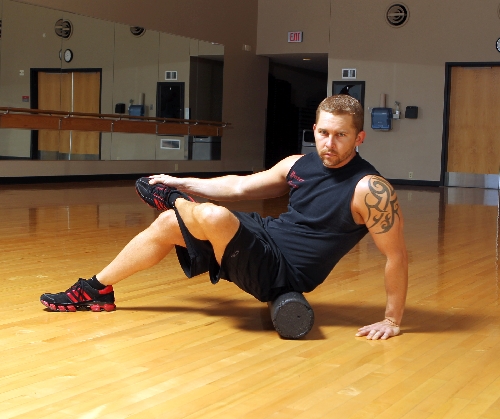Here’s a secret to peak performance: Take time to recover

I’m about to reveal a fitness tip that most pros don’t talk about. It’s the reason they can be in such good shape for so long.
Whether you’re a professional, semi-pro, recreational athlete or just a three-day-a-week gym visitor, you need to know about one of the most important areas of fitness.
Recovery.
What do you do to recover? Most people just rest on their off days. True, resting on days your don’t hit the gym allows your muscles time to replenish and rebuild broken-down tissue. But what if there were more you could do?
If you were to work out hard, why wouldn’t you recover hard? Make recovery an event, not just a period of inactivity. If you perform a repetitive action such as running, cycling, lifting, sports or circuit training, you will develop tight muscles. These tight muscles will get tighter until the point of injury unless nursed back to proper condition.
Nursing and nourishing your body back to top form takes some effort. There are a few things you should do, including some you may be scared to try. One of my favorite recovery tools is SMR. Self-myofascial-release is the use of pressure on knots that can form in muscles. This helps the muscles relax instead of being tight after an intense training session. See my previous column on SMR at www.lvrj.com/columnists/Chris_Huth.html. 
Foam rolls are an effective SMR tool. They are good for rolling tightness out of the legs and lats. For knots in the muscles of the back, chest, shoulders, arms and deep hamstring, you have to get a little creative. Some athletes use soft balls to dig deeply into hamstrings, chest and upper back knots. Lacrosse and golf balls work equally well on arms and upper back knots. It’s not uncommon for gym members to see me digging into my calf with a golf ball while I’m waiting for my next session to start.
The exercises I have chosen today are some SMR techniques that work well to roll out knots. They can also aid in improving your form during exercise.
Many athletes also use massage to relax tight muscles. Therapists use multiple modalities and techniques to find and release muscle tension. Good therapists are worth their weight in gold. It would take me hours to roll out every knot I knew about. A masseuse can do a better job in just a few sessions.
There are a number of supplements you can take to speed up the recovery process. BCAA’s are the go-to supplement for recovery. BCAA stands for branch-chain amino acid. When you eat anything with protein in it, your body breaks that protein into branch-chain amino acids, which are delivered to muscle tissue to aid in repairs.
Taking BCAA’s before and/or after your workout is like dropping your broken car off at the repair shop with all the new parts already in the trunk. All the mechanic has to do is install them. It takes less time and you know the parts that went in were top quality.
L-Glutamine is another recovery supplement, often found in powder form. You take it in the morning mixed with juice or water. It has many other benefits, such as fat metabolism, and can help curb your sweet tooth since it is metabolized the same way as sugar.
Many supplements stores sell post workout shakes and supplements. They are made up of a variety of amino acids, compounds and some even have caffeine. Be sure you know what you’re taking. Ask the clerk which is appropriate for you.
One of the best things you can do for recovery is eat well. Food should have more purpose than just to make you full. A good source of protein with veggies, even some carbs, and large amounts of water will do volumes for your recovery. Getting a good night’s sleep goes without saying. Your body needs rest to repair itself. Work hard, recover hard.
Active recovery is doing light cardio on your rest days. The goal is to get your heart rate up so your body pumps nutrient-rich blood to its damaged tissue. Any form of cardio can be used for active recovery. Jogging, biking, swimming, light circuits and yoga are all good.
Here’s an excellent recovery method you might find a little off-putting. Sit in a bath tub full of ice and water for about 10 minutes. Yes, I’m serious. It’s like changing the oil in your car. Only here, as you sit and freeze, your blood vessels tighten and force blood out of the limbs. Shivering and a light numbness are common. When you get out of the tub, warm “new” blood that’s full of nutrients and oxygen floods the drained tissue in a effort to reheat the body. As the body warms itself by pumping warm blood to cold extremities, it carries away lactic acid buildup and delivers nutrients in its place. This supercharges the recovery process.
Don’t go jumping neck-deep into an ice bath because the guy in the paper said so. Start with the feet, then the lower leg, then up to the hips. Take it slow. This is supposed to be recovery, not a heart attack session.
Many top athletes swear by ice baths, but research studies are inconclusive. Some studies say ice water is better, others say cold water, others say contrast ice and heat. If you feel bold, take your chances. In recovery, the goal is to get nutrients to damaged tissue. What better way than to force the body to warm itself back up?
Chris Huth is a Las Vegas trainer. You can contact him at 702trainer@gmail.com. Before beginning any exercise program, consult your physician.